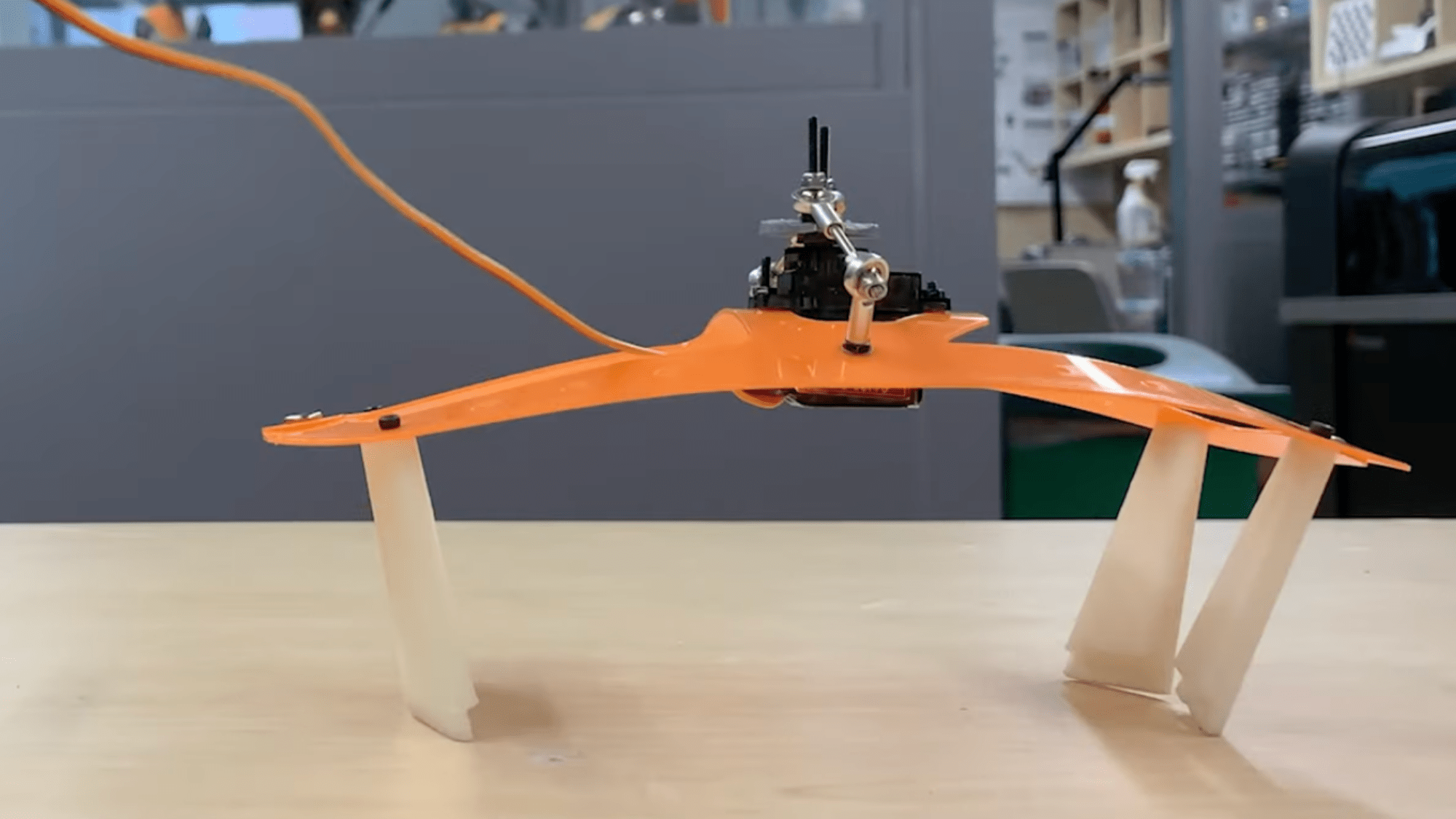

Although many modern robots often take inspiration from the natural world around us, one of the newest examples derives its movement from a small, ubiquitous styling option: the common hair clip. Designed by scientists at Columbia University and subsequently highlighted by New Atlas, the research team recently took inspiration from the beauty product’s simple, alternating states to develop their “fast, untethered soft-robotic crawler with elastic instability.”
[Related: This spooky robot uses inflatable tentacles to grab delicate items.]
Or, in layperson’s terms, the Barrette Bot… or, rather, two Barrette Bots:

Using what team leads Zechen Xiong, Yufeng Su, and Hod Lipson dubbed their Hair Clip Mechanism (HCM), the group developed a pair of small, soft robots that utilize strips of prestressed plastic that is then attached to basic electric servos. When activated, the strips alternate between convex and concave shapes, thus enabling movement while simultaneously amplifying the force behind them.
To test out their new design, the group developed an aquatic robot that relies on the HCM as a fishtail alongside another machine that pairs two HCMs to approximate a quadrupedal organism. The results offered solidly speedy robots compared to their respective sizes—moving about 435mm (roughly two body lengths) per second for the fishbot, and 313mm (1.6 body lengths) per second for the land-bound creation. Although the team claims their small robots are speedier than other groups’ comparable designs, North Carolina State University recently concocted a hairclip-like swimming robot of their own capable of paddling almost 3.75 body lengths per second.
[Related: How engineers taught a manta ray-inspired robot the butterfly stroke.]
Still, what’s particularly interesting about the new HCM is that it allows the robots’ frames to simultaneously act as their propulsion systems. In their demonstration video, the team likens it to a car whose engine also functioned as its frame, or a human skeleton that doubled as a body’s musculature. Cutting out the need for an entirely separate motor mechanism could allow for cheaper, simpler, and lighter robots in the near future, the team says.
Soft-bodied robotics are gaining popularity for their creative, lightweight, economical designs that are as agile as they are delicate and effective. Recently, Colorado State University showed off a soft robotic gripper so sensitive that it can pick up individual droplets of liquid without compromising its surface tension. Then there was the tentacled robot inspired by octopuses, which looks much spookier than the barrette bot.